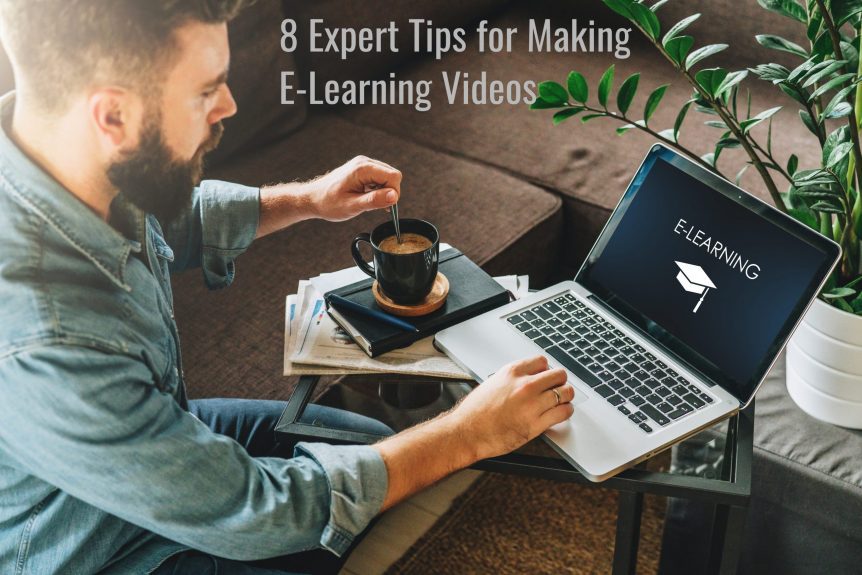8 Expert Tips for Making E-Learning Videos
Videos are an important part of most e-learning courses. Learners like watching videos, they are an excellent teaching tool, and they can increase engagement and satisfaction levels. However, modern employees in the UAE and Saudi Arabia have high expectations when it comes to videos. They watch a lot of high-quality and well-produced video content both professionally and personally, so the bar you have to reach is high.
Therefore, it is important to ensure the videos you include in your e-learning courses are as good as possible. The following eight expert tips for making e-learning videos will help:
1. Think About Whether the Video Will be Valuable to the Learner
While you will hear most e-learning professionals talking up the importance of video, and rightly so, it is also crucial that you include video for the right reasons. So, don’t just include video in your e-learning courses for the sake of including a video. Instead, think about the value of the video to the learner. Will it help them get a better understanding of the specific point and the overall topic of the course? Is there a better way to present the information?
2. Videos Should be to the Point
Videos that contain too much information on a wide variety of topics risk confusing the learner. Even in the best-case scenario, covering too many points or topics will reduce overall retention rates as our brains are not good at retaining multiple pieces of new information at the same time. So, get to the point and stick to it.
3. Keep Your Videos Short
Around 3-10 minutes is usually the ideal video length for most topics. Under three minutes, and you should ask if it is really worth creating the video. Over 10 minutes and you should consider whether it would be better to split the content across multiple videos or a video and other media.
4. Spend Time Getting the Script Right
Start by thinking about the above points, i.e., what is the point of the video, and how can you get that point across succinctly. Write clearly in everyday language and with a conversational tone, being careful not to go off on tangents.
5. Compress for Mobile Users
Okay, we’re going technical with this tip, but it’s an important one. Whether you create a video using your smartphone or you get it professionally produced, the resolution is likely to be on the high side when it is complete.High-resolution videos are important for a range of situations, but not for e-learning courses and certainly not for e-learning courses that learners will complete on mobile devices. Even to video professionals, the difference in perceivable quality between a compressed video and a full-sized video when watched on a mobile device is marginal.
So, make sure you compress your videos before they are included in your e-learning course. Compressing them will reduce the file size, which will reduce download times and put less strain on learners’ phones while playing.
6. Think About Translated Voiceovers, Subtitles, and Closed Captions
If the learners completing your course speak more than one language, you may have to make your videos multilingual. There are a few things to consider in this situation in addition to language. Those considerations include cultural differences and any text that is part of the visual content of the video.
Your options if you need your video to be multilingual include recording voiceovers in different languages or adding subtitles. If you are adding subtitles, you will need to think about the placement of the subtitles when creating the video, i.e., it is important to ensure the subtitles don’t cover up important parts of the video.
The same applies to closed captions. Closed captions are different from subtitles in that they are used when people watch a video with the sound muted. Therefore, you should consider adding closed captions even when multilingual versions of your video are not required.
7. Audio Quality is Important
Staying with audio, it is essential you ensure the quality of the audio is as good as possible. Take videos shot on a mobile phone as an example. On modern smartphone devices, the quality of cameras is exceptional, making them perfectly capable of capturing high-quality video. However, the quality of microphones is not up to the same standard, leading to audio that can be quiet, echoey, and generally low-quality. So, make sure you take steps to ensure the audio on your videos is up to scratch.
8. Tell a Story
A video that explains a concept in a similar way that a lecturer would in front of a group of students probably won’t get the attention of a learner completing an e-learning course.
Instead of explaining the concept, it is usually much more effective to tell a story. The story will explain the point you want to make, but the story element will make the point more relevant and relatable to the learner, ensuring they get a better understanding.
Mixing Up Content in Your E-Learning Courses
The best approach to developing content for an e-learning course is to use a wide range of media types, from text to images to graphics and more. Videos can help with lots of different topics, so it is worth investing in video content. You don’t need to spend a fortune, but it is important you get the basics right, starting with the tips on this list.
